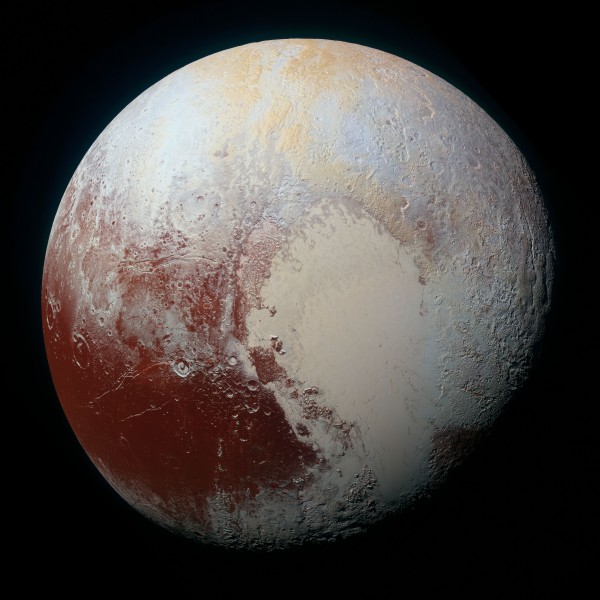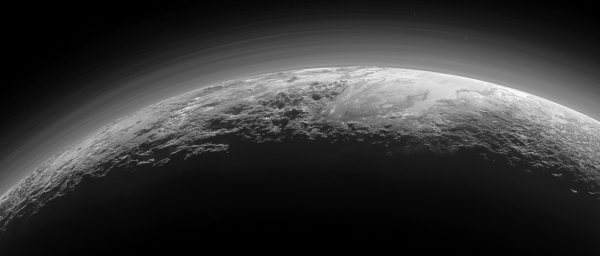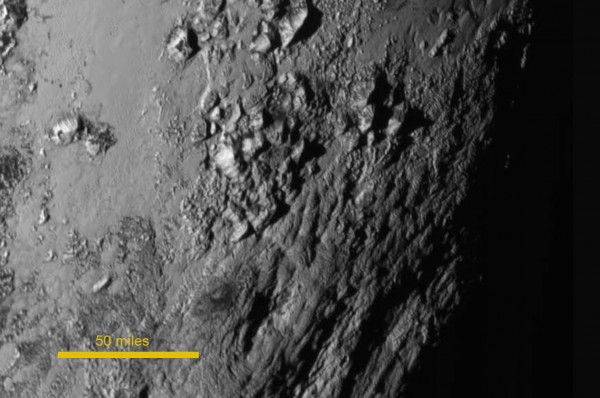The NASA New Horizons team has released a gorgeous full disk image of Pluto. I would predict that this high resolution image will be the definitive image of Pluto for at least a century. Expect to see this image any time you run across Pluto in any media, from Wikipedia to school textbooks.
Panning across the image one can see that Pluto does feature a fair number of impact craters, more than I noted on the earlier images that often concentrated on the ice fields of the Sputnik Planum. This ice cap is startlingly smooth, with flow features visible, primarily at the margins. The ice is probably nitrogen ice as water is essentially a rock at these temperatures. Indeed much of the bedrock visible across the image is probably water ice.
The ice sheet is made up of polygons, a feature sometimes seen in ice here on Earth. For some reason the boundaries of the polygons are marked with long linear double depressions. These depressions look like 4WD roads across a desert of sand, if the vehicles had tires a mile across.
On the right side of the ice fields of Sputnik Planum there are a a large number of aeolian features, huge ridges one would suppose are aligned with the prevailing winds. Given that the image resolution is 0.8 miles per pixel these features must be miles high. These have recently been dubbed snakeskin terrain. I expect the planetary scientists will have a bit of fun trying to figure these out.
It is a beautiful image, conveying a great sense of what this dwarf planet is really like. Download the high resolution image and just wander. The larger image is bigger than WordPress will allow, use the link above to get the full size image.




